[disclose]
We have been to many parts of Germany, but never Münster. Looks like a fun place to chill for a few days.
Preethi Chandrasekhar of The Eager Traveler, who last wrote last wrote about Uzbekistan, Sri Lanka, Bogota, Colombia, Medellin, Colombia, Carmel, California, Portugal, Austria, Czech Republic, Anguilla and Dominican Republic, recently went and here are her tips to Münster should you visit.
If you would like to write about your recent travel experiences on The Flight Deal, submit your pitch here.
====
When you think of Germany, what comes to mind is Munich, Berlin, the Black Forest and perhaps castles galore! However, I recently had the amazing opportunity to discover historical Germany! The beautiful Hanseatic cities of Münster, Osnabruck, Lubeck and Rostock in Northern Germany are just an hour or two away from each other. These four cities make a great road trip or train journey from Berlin or Dusseldorf.
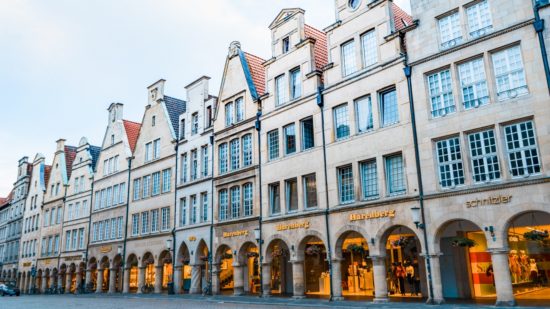
Prinzipalmarkt – Historic marketplace Photo: (c) 2019 – Preethi Chandrasekhar of The Eager Traveler
What’s a Hanseatic City?
In the 12th century, the merchants from the North German towns built an extensive trading network across political borders. They dominated the Baltic markets and their trading expanded west to England and south to France, Portugal, Spain and Italy. The merchants were from close to 200 cities and formed a group or trading community called the Hanse, aimed at protecting the interests of these merchants. The Hanse shared a common language, legal culture, and worked on mutual trust.
Getting In
I flew from SFO to Zurich, then onward to Dusseldorf. From the airport train station, I took a train to my first stop in Duisburg, just a mere 10 minutes. Here I transferred onto a second train to Münster, just an hour away. I spent about 3 days discovering Münster.
Why You Should Visit Münster – “Biking Capital of Germany”
What really stood out to me about this city is the prevalence of cycling amongst ALL ages, the conservation efforts of the Allwetterzoo, the astronomical clock inside the cathedral, the three man sized cages on the spire of St. Lambert’s Church and the tower keeper.
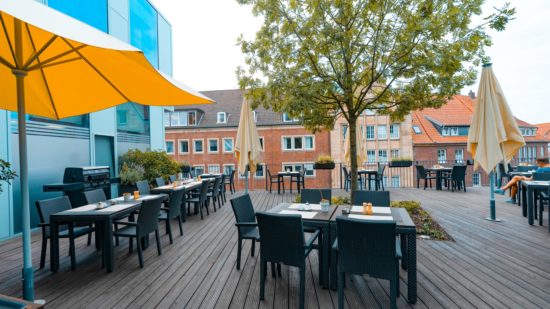
H4 Hotel Rooftop – Photo: (c) 2019 – Preethi Chandrasekhar of The Eager Traveler
A 10-minute walk from the train station had me standing in front of a modern building called H4 Hotel. It is perfectly located at the entrance to old town. It’s a standard hotel with a luxury feel. Yet it felt intimate and cozy thanks to my room with the window seats. The architecture is vaguely Scandinavian-ish. The restaurant on site has a buffet spread that you can take advantage of in their lovely rooftop.
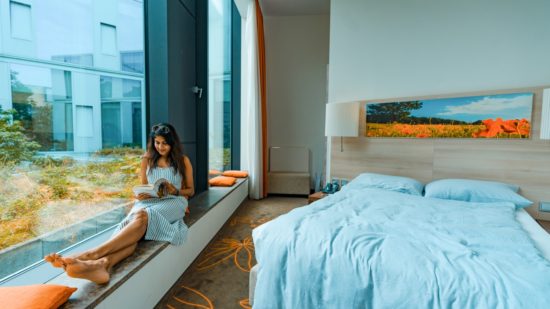
H4 Hotel Rooms – Photo: (c) 2019 – Preethi Chandrasekhar of The Eager Traveler
To really see Münster, get on a bicycle. Cycles are the common way to get around this historic university city and you will see people of all ages, cycling along the streets of what many call Germany’s prettiest city. According to an article that appeared in Deustche Welle, Munster is Germany’s cycling capital and a stellar example of improving urban mobility. I couldn’t agree more.
Much of the city was destroyed in World War II, thanks to its military presence. I was shocked to find out that about 91% of the old city was destroyed by the Allied air raids. The old city was re-built, although many of the buildings were replaced with cheaper construction. More than 300,000 people live here and the city itself is small, and easy to get around.
If you want to feel that authentic small city vibe, Munster is the place to visit in Northern Germany.
Münster’s Brutal Anabaptist Rebellion
In 1530, there were two prominent groups in Münster: the Catholic aristocracy, and the poor reformist peasants led by a Protestant. The rising number of rebels became a threat to the Catholic church, which scared the prince-bishop who tried to expel the reformists and their leader. But the city council didn’t allow this and granted religious freedom to all groups. This attracted an Anabaptist leader into town and he decided to establish his reformist principals. The history surrounding the Anabaptists (seen as radicals even amongst their fellow Protestants) who believed that only adults should be baptized, is fascinating. The Anabaptist leader also wanted to establish a form of pure communism and was welcomed into Munster. Soon the city council was taken over by radical Anabaptist believers. The leader’s call to execute those who refused to be rebaptized meant many Catholics and Lutheran Protestants fled the town. In order to put an end to this madness and regain Catholic control over Munster, the prince-bishop gathered an army and decided to take back the city. The Anabaptist leader and two of his closest followers were captured, tortured and left to rot in the cages of the Lamberti Church for 50 years. As I stared up at the cages on the spire of the church, I realized this serves as a reminder for all those who chose to go against authority or it can be seen as a testament to the impact it caused Germany from a political and religious standpoint well into the years.
10 Things to do in Münster
- Cycle the Promenade: Münster has created a Promenade, an inner green belt on the site of what used to be the town walls, originally surrounding the historic center. Lime trees offer shade on both a walking path and a separate cycle track, encouraging eco-mobility. It’s a truly liberating feeling, wind in your hair, lush greenery on both sides as you cycle leisurely past pretty homes and parks.
- Aasee: Did you know the Aasee was awarded a prize for Europe’s most beautiful park in 2009?! Cycle down the promenade to the Aasee, Munster’s central recreation area around the lake. It’s only a 15-minute walk from Prinzipalmarkt, and perfect for a picnic, walking, or biking around the lake. The park is also home to the Munster Sculpture Project organized every 10 years. But you don’t have to wait 10 years to see the project. After each project, Munster selects works of arts to be on permanent display around town.
- Prinzipalmarkt: Prinzipalmarkt is the historical principal marketplace with 48 Gable houses (pronounced Geeble) where the merchants used to live. Today the shops under these houses still sell local items from clothes to accessories to housewares to bakeries. There are a few restaurants in this square with outdoor seating and I highly recommend you pick one for an afternoon of people watching.
- City Hall (Friedensaal, Hall of Peace): Walk toward Prinzipalmarkt and gaze a moment at the historical city hall, a 14th century Gothic building, with its high Gable (pronounced geeble) that was reconstructed after WW2. Take a peek inside the city hall on the way and especially the Friedensaal (Hall of Peace), where part of the Peace of Westphalia was confirmed in this hall.
- St Lambert’s Church: Once you leave the city hall and turn right you will come face to face with St. Lambert’s Church, in Gothic architecture. You can recognize this church anywhere because of its three man-sized cages hanging from the spire. What’s unique about this church is that it is the only church in Munster to have a door/tower keeper. Martje Salje holds the honor as first female tower keeper. Her role is to blow the horn everyday (except Tuesdays) from 9pm-12pm, and watch over the town from her high vantage point. I had the honor of visiting her office in the tower after climbing 298 steps and seeing the remarkable views from her “balcony”.
- Paulus Dom and Saturday markets: St. Paulus Dom is the cathedral church and is host to a wonderful market in the square as well as the astronomical clock, which escaped WW2 damage. Once a day at noon, you can see an automated sequence of the adoration of the magi. Don’t forget to try the pea soup and traditional sausage at the market. I overdosed on freshly squeezed juices and dried fruit as well!
- Allwetterzoo: During the summer months, head down to the Aasee and take the solar boat SOLAARIS to the All-Weather Zoo. More than just a zoo, it’s known for its conservation efforts. For example, Allwetterzoo breeds endangered songbirds in order to help maintain healthy and self-sustaining populations. The zoo also breeds the endangered Bali Mynah. These birds suffer from illegal poaching for the cage-bird trade. In 2001, only 6 were left in the wild! The zoo is home to 20 species of the endangered Southeast Asian turtles, out of which one species was just released to China. There are classes for children and they can even feed elephants during feeding time.
- Art Museum Pablo Picasso: Why is Germany’s first Picasso museum housed in Munster? There’s an interesting story here, but I will leave you to visit and find out for yourself!
- LWL Museum for Art and Culture: One of the largest art and culture museums in the province of North Rhine-Westphalia, you will see collections from the Middle Ages to the present day in 51 well-designed rooms.
- Harbour (Hafen): I cycled over to the harbor area to find a surprisingly relaxing vibe of cafes and restaurants. You will see many outdoor patios overlooking the Dortmund-Ems Canal, people walking their dogs, and several people just sitting on the promenade enjoying the water views.
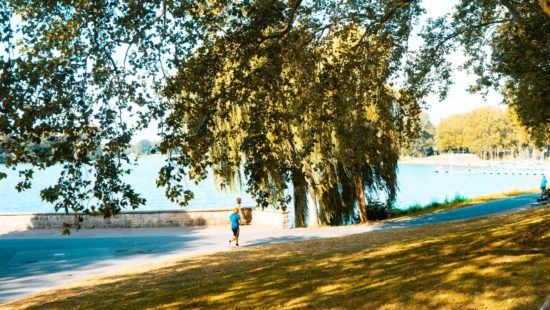
Aasee – the Lake – Photo: (c) 2019 – Preethi Chandrasekhar of The Eager Traveler
Where to eat/drink
- Brauerei Pinkus – This is Munster’s oldest brewery, dating back to 1816 so be sure to sample the local beer here!
- Altes Gasthaus Leve – I dined on a mushroom pancake and strawberry beer at Munster’s oldest restaurant (1607). The atmosphere inside is utterly charming with multiple small seating rooms.
- Pension Schmidt – Student café, reminds me of a cozy living room
- Il Panino – great 4euro paninis and pizzas, sit on the fountain in the square in front of the shop and enjoy!
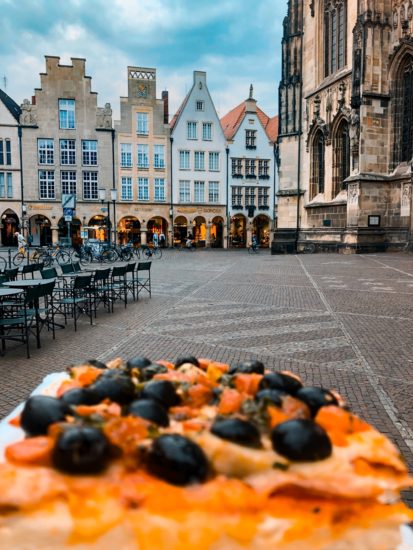
Il Panino pizzas! – Photo: (c) 2019 – Preethi Chandrasekhar of The Eager Traveler
Overall, I was stunned at how inviting and welcoming I felt in Munster. As a solo traveler, it was super easy to get around, both by cycle and on foot. Munster is popular right now with only German and Dutch tourists, so you may not hear many English-speaking tourists. I found the city to be non-touristy and would classify this as a hidden gem in Northern Germany. My advice? Go before it becomes mainstream.
About the Author:
Preethi Chandrasekhar is a freelance travel writer/influencer with a passion for sharing her travel stories to inspire people to explore more of this beautiful world. She’s interested in experiential travel and writes frequently about off the beaten path destinations. Follow her on Instagram and her blog, The Eager Traveler, for more of her travel pics and stories!
=====
To make sure you receive our latest deals, LIKE our The Flight Deal Facebook Page, follow us on Twitter @TheFlightDeal, Threads @TheFlightDeal or The Flight Deal WhatsApp channel or subscribe to The Flight Deal RSS Feed or Subscribe via Email (Once a Day)
The Flight Deal does not sell travel products or services. We provide you with information about third-party travel suppliers’ offers, and link you to their sites. The information posted by The Flight Deal is valid at the time of publication. However, we have no control over the suppliers, and we therefore do not warrant or guarantee that their offers will not change or become unavailable. Nor are we responsible for their products, services or site content. Please see their sites for their most up-to-date offer information and all applicable terms and conditions.
Sign up to receive The Flight Deal Daily DealsLetter, to stay up to date with the latest and greatest flight deals available.

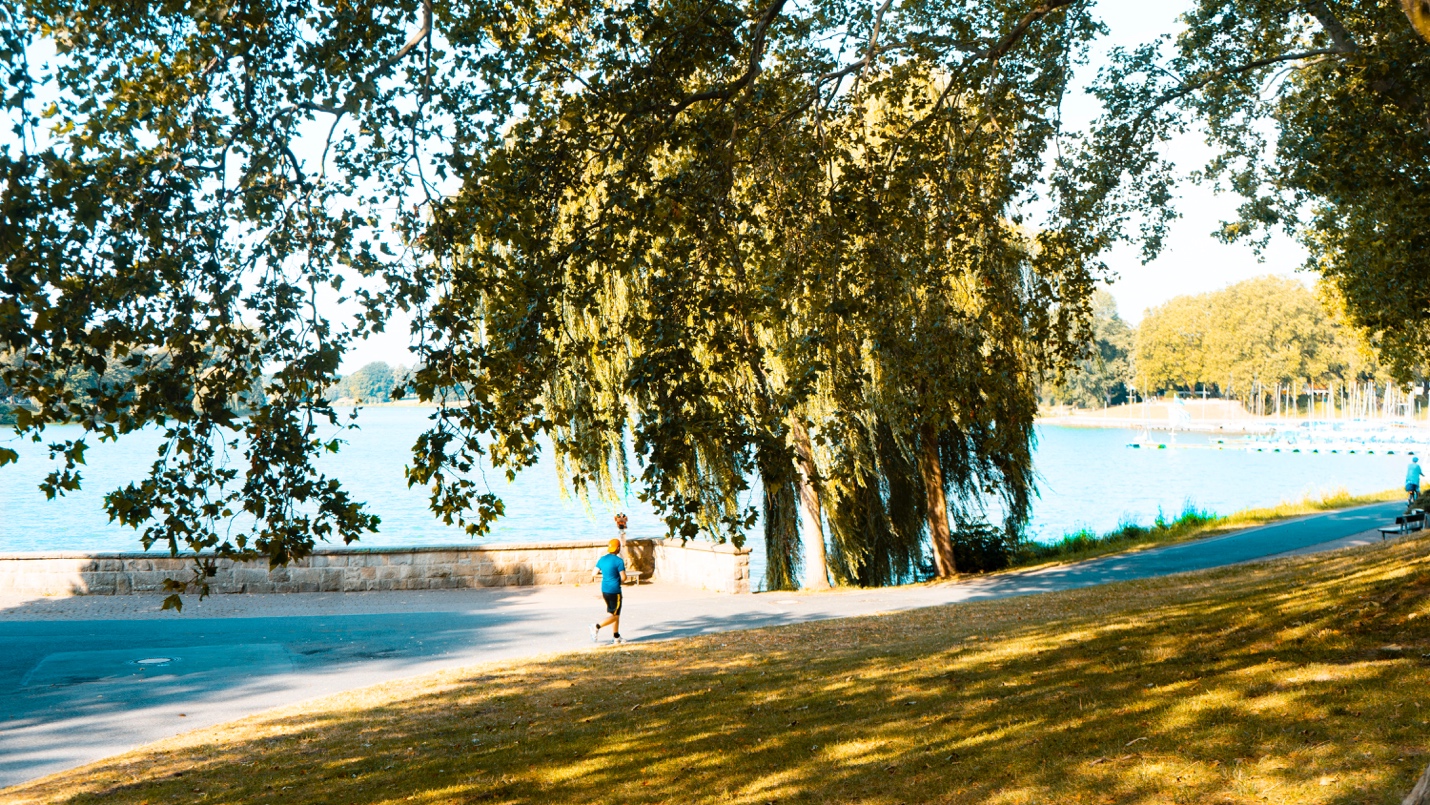
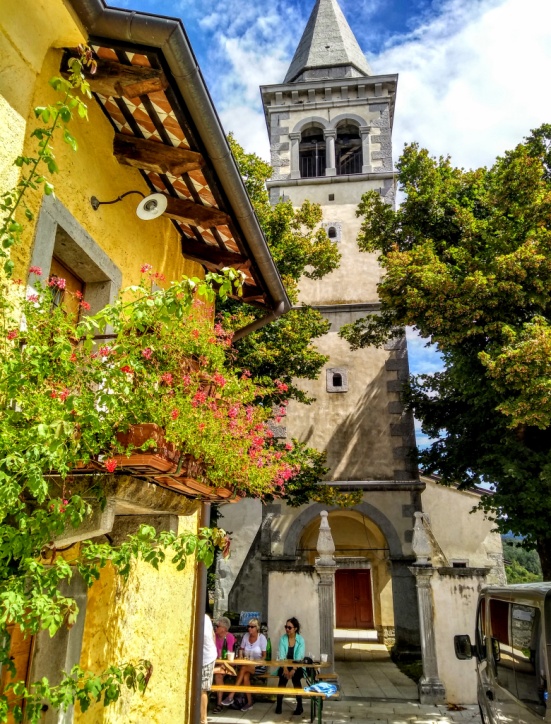
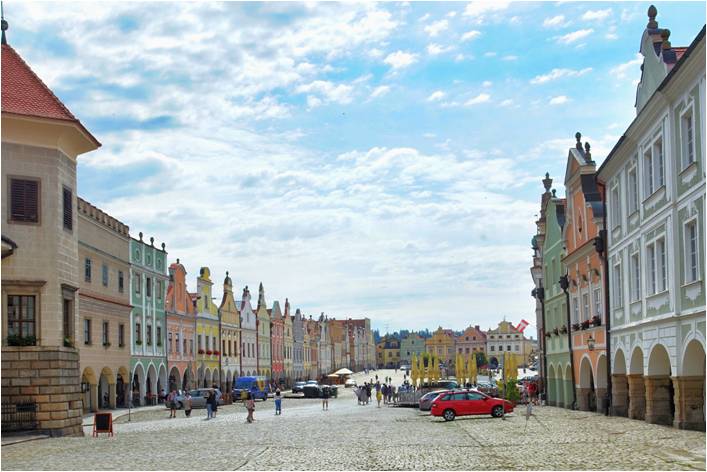
No Comments